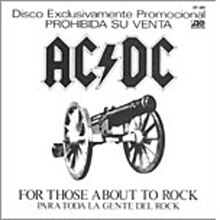
AC/DC are an Australian rock band formed in Sydney in 1973 by Scottish-born brothers Malcolm and Angus Young. Their music has been variously described as hard rock, blues rock, and heavy metal, but the band themselves call it simply "rock and roll".

Angus McKinnon Young is an Australian musician, best known as the co-founder, lead guitarist, songwriter and sole original member of the hard rock band AC/DC. He is known for his energetic performances, schoolboy-uniform stage outfits and his own version of Chuck Berry's duckwalk. Young was ranked 24th in Rolling Stone's 100 greatest guitarists of all-time list. In 2003, Young and the other members of AC/DC were inducted into the Rock and Roll Hall of Fame.

Blow Up Your Video is the eleventh studio album by Australian hard rock band AC/DC. The album was re-released in 2003 as part of the AC/DC Remasters series.
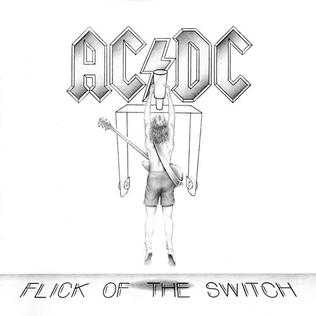
Flick of the Switch is the ninth studio album by Australian hard rock band AC/DC. The album was deemed a commercial disappointment after it failed to match the sales figures of the band's two previous releases, 1980's Back in Black and 1981's For Those About to Rock, and its release represented the beginning of the band's commercial decline. Despite this, opinions of Flick of the Switch have been quite positive in the years since its release, and the album has often been mentioned as one of the best releases of 1983. The third AC/DC album to feature lead vocalist Brian Johnson, the album is also the last to feature drummer Phil Rudd before his return on Ballbreaker (1995). The album was re-released in 2003 as part of the AC/DC Remasters series.

T.N.T. is the second studio album by Australian hard rock band AC/DC, released only in Australia, on 1 December 1975. This was the band's first release with bassist Mark Evans and drummer Phil Rudd, although the last two tracks feature George Young and Tony Currenti, both of whom previously appeared on High Voltage.

Powerage is the fifth studio album by Australian hard rock band AC/DC, released on 25 May 1978. This was the band's first album to feature Cliff Williams on bass guitar, and it was also the first AC/DC album not to have a title track and the first worldwide not to be released with a different album cover. Powerage was re-released in 2003 as part of the AC/DC Remasters series.

If You Want Blood You've Got It is the first live album by Australian hard rock band AC/DC, and their only live album with Bon Scott as lead vocalist. It was originally released in the UK and Europe on 13 October 1978, in the US on 21 November 1978, and in Australia on 27 November 1978. The album was re-released in 1994 on Atco Records and in 2003 as part of the AC/DC Remasters series.

No Bull is a live video released by AC/DC in November 1996, filmed on Super 16mm at Madrid's Plaza de Toros de Las Ventas on 10 July 1996 during the Ballbreaker world tour. It was directed by David Mallet, produced by Rocky Oldham, mixed by Mike Fraser, and edited by David Gardener and Simon Hilton; production company was Serpent Films.

"Big Gun" is a song by Australian rock band AC/DC. It was released as a single in 1993 and can be heard on the soundtrack to the Arnold Schwarzenegger movie Last Action Hero, as well as during reruns of The Savage Nation talk show as bumper music. It was later released on the 2009 box set Backtracks. It became the band's first No. 1 on the Album Rock Tracks chart in 1993.

"Rock and Roll Ain't Noise Pollution" is a song by the rock band AC/DC. It is the tenth and final track of the album released in 1980 Back in Black. It is the fourth and final single released from the album. The song reached number 15 on the UK singles charts, the highest placing of any song on the album.

Live at Donington is the DVD recording of the Australian rock band AC/DC‘s show at Donington Park on 17 August 1991, directed by David Mallet; it was the band's third Monsters of Rock festival. The two-hour show was performed before 72,500 spectators and included real cannons, the Hells Bell, an inflatable Rosie and two inflatable Anguses: one to the right of the stage, and one in the back of the stage during Hell Ain't a Bad Place to Be. It was filmed in 35 mm Panavision and had 26 cameras that included one situated inside a helicopter. The DVD includes special features such as stereo and 5.1 surround sound, Iso-cam versions of certain songs for different band members, and audio commentary from Angus and Malcolm Young.
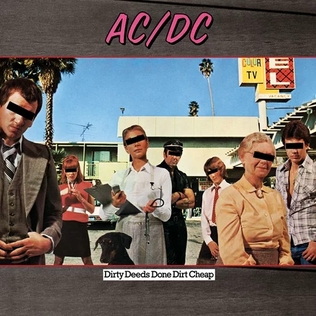
Dirty Deeds Done Dirt Cheap is the third studio album by Australian hard rock band AC/DC, originally released only in Europe and Australia in 1976. The album was not released in the United States until 1981, more than one year after lead singer Bon Scott's death. This was also AC/DC's first album in its entirety to be recorded with the same lineup, rather than including at least one track recorded with a different bassist or drummer.
The Ballbreaker World Tour was a concert tour played by the Australian hard rock band AC/DC, in support of their thirteenth studio album Ballbreaker. This tour had 5 legs around the world lasting 11 months starting on 12 January 1996 in Greensboro, North Carolina finishing on 30 November 1996 in Christchurch, New Zealand.

The Razors Edge World Tour was a concert tour played by the hard rock band AC/DC, in support of their twelfth studio album The Razors Edge. This tour had 5 legs around the world lasting 12 months starting on 2 November 1990 in Worcester, Massachusetts finishing on 16 November 1991 in Auckland, New Zealand.

For Those About to Rock is the eighth studio album by Australian hard rock band AC/DC. It was released on 20 November 1981.
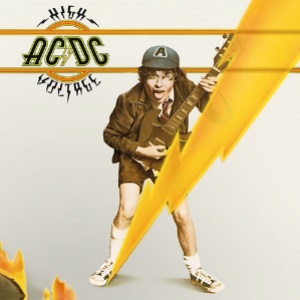
High Voltage is the first internationally released studio album by Australian hard rock band AC/DC. It contains tracks from their first two previous Australia-only issued albums: High Voltage and T.N.T..

High Voltage is the debut studio album by Australian hard rock band AC/DC, released only in Australia, on 17 February 1975. Their first international release in 1976 would also be named High Voltage, though with a radically different track list.
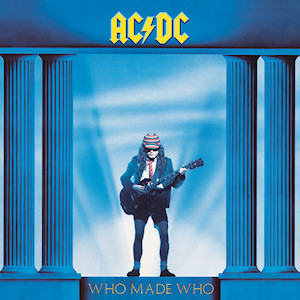
Who Made Who is a soundtrack album by Australian hard rock band AC/DC. Released on 24 May 1986, the album is the soundtrack to the Stephen King film Maximum Overdrive. The album was re-released in 2003 as part of the AC/DC Remasters series.

Backtracks is a box set by Australian hard rock band AC/DC. It was announced on 29 September 2009 and was released on 10 November 2009. This is a collection of the band's studio and live rarities together in one boxset. There are two editions; a Deluxe Edition and a Standard Edition. All tracks have been remastered to match the sound of the 2003 album remasters and many songs appear on CD for the first time. It is the band's second box set of rarities, following the Bonfire release in 1997.
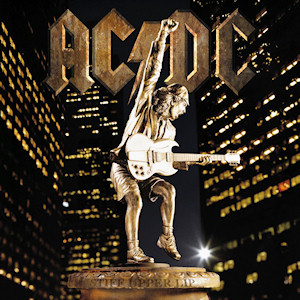
Stiff Upper Lip is the 14th studio album by Australian hard rock band AC/DC. It was released in February 2000. The album was produced by George Young, older brother of Malcolm and Angus Young and this was the last AC/DC album that George produced before his death in 2017. The album was re-released in the US on 17 April 2007 as part of the AC/DC Remasters series. It was re-released in the UK in 2005.
